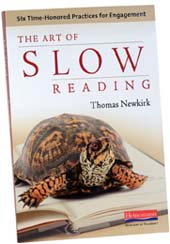 |
 |
| current issue |  |
past issues |  |
send a letter/news |  |
address update |  |
advertise |  |
about us |  |
alumni home |
Previews
|
|
|
Praise for Perusing Professor Tom Newkirk makes the case for reading better, smarter—and slower Slow Reading: Six Time-Honored Practices for Engagement See also Web Extras by Janice Harayda '70
Most people like books they can't put down. Then there's Tom Newkirk, English professor and author of The Art of Slow Reading: Six Time-Honored Practices for Engagement (Heinemann, 2012). He likes books he can put down. You won't find Newkirk tearing through The Hunger Games as he rides an exercise bicycle and scans text messages at the same time. He's joined the slow reading movement, a loose group of scholars and others who favor patient and focused reading in what he calls an "age of distraction." Like the slow food movement, the slow reading movement is about more than slowing down. It's about reading for pleasure and meaning, not just for information. For Newkirk, that requires reading at a comfortable pace. So he may take two weeks to finish a book, putting it down often, whether it's Jennifer Egan's best-selling novel A Visit from the Goon Squad or Charles Murray's sociological study Coming Apart. Newkirk became interested in the movement through his work at UNH, which includes training teachers at the N.H. Literacy Institutes, an annual summer program that attracts educators from around the United States and Canada. He learned that elementary schools, driven by federal policy, are pushing students to read faster and faster. And while reading speeds have gone up, comprehension hasn't.
As a partial antidote, Newkirk offers six slow-reading principles and suggests how to apply them in The Art of Slow Reading, a book for teachers that has the engaging, conversational tone of a good memoir and contains ideas that parents could adapt for use at home with their children. His techniques include reading aloud, memorizing favorite lines, and marking phrases in a way that gives them more meaning than a swipe with a yellow highlighter. And he applies his methods while reading at his own tempo for 30 or 40 minutes each morning—"after coffee, before breakfast"—in a green armchair. "I find that by slowing down and reading in a very deliberate way, I can read almost anything," Newkirk says, citing James Joyce's Ulysses as a novel he finished that way. "It's like hiking in the White Mountains. If you take it slowly and in stages, you can make it to wherever you'd like to go." Newkirk believes that slow reading can help people recall what they've read many years later. He describes a day when his father and an uncle waited outside a Kentucky probate office after the death of their mother. After a couple of hours, his uncle, "never known as a great student," sighed and said, "The law's delay, the insolence of office." It was a phrase from "Hamlet" that he had memorized perhaps 50 years earlier, Newkirk writes, "and it was perfectly appropriate to that moment." ~ |
Overviews:
Shirt of Flame: A Year with Saint Thérèse of Lisieux by Heather King '77 Heather King is Catholicism's answer to Anne Lamott, the memoirist who writes gracefully about the comforts of her Protestant faith. In Shirt of Flame, King tells how she found inspiration in Saint Therese of Lisieux after a harrowing series of crises that included cancer, a divorce, her father's death and a stint in rehab for alcoholism. And if she lacks Lamott's wisecracking style, that will add to the appeal of her book for anyone who prefers a more contemplative tone. 
August Gale: A Father and Daughter's Journey Into the Storm by Barbara Walsh '81 At the age of 18, Barbara Walsh '81 learned that a grandfather whom she had been told was dead was actually alive. Why had people hushed-up his existence? Walsh, a Pulitzer Prize-winning journalist, describes her quest for answers in a book that entwines the stories of her ancestors and of a devastating Newfoundland hurricane that killed a great uncle. Her prodigious research helped bring her surviving relatives closer together, and her account of how it happened may inspire others to plumb their own families' mysteries.

Under the Isles of Shoals: Archaeology & Discovery on Smuttynose Island by J. Dennis Robinson '73 People and animals have been finding their way to the beautiful Isles of Shoals for millennia, and an ongoing archaeological dig has uncovered thousands of artifacts they left behind—musket balls, a whalebone toothbrush, sharks' teeth, and much more. Designed to enhance an exhibit at the Discover Portsmouth Center from May-August 2012, this richly illustrated book combines a history of the islands with an account of the excavations that raises big questions such as: Did early climate change play a role in shifts the archaeologist have observed?
|




|
Web Extras Additional books by UNH alumni and faculty and staff members Including, in this issue: Gregory Bastianelli '81 John Cerullo, history professor Mark DeCarteret '93 Andrew Fersch '07G Kathleen Toomey Jabs '04G Anne Marchant '79 John Porter '71 J. Dennis Robinson '73 Lisa Stepanski '96G Paul Tomlingson '53, '64G, '68G | |
|
Gregory Bastianelli '81 Jokers Club Jokers Club, the debut horror novel from Gregory Bastianelli was released nationally in November from JournalStone publishers. Jokers Club tells the story of failed horror writer Geoffrey Thorn who struggles to write a novel about a friend who was committed to a sanitarium after a childhood prank gone awry. Thorn returns to his hometown to reunite with old friends and try to rediscover the imagination he had as a child. As he works on his manuscript, death stalks those around him and the struggling writer begins to get lost in his imagination. The dead and the living coexist in the pages of Thorn's novel in a town where time seems to be frozen in a past that still haunts the present. JournalStone President Christopher C. Payne said, "With well-crafted twists and turns, Gregory Bastianelli keeps you on edge while weaving a connection to the characters and immersing you into the story. I can't wait to see what he comes up with next." "It isn't often I read a book that I have trouble putting down, but the Jokers Club grabbed my attention and wouldn't let go," said Brett J. Talley, author of the Stoker-nominated novel, "That Which Should Not Be." "Gregory Bastianelli is a master at creating rich and fully-developed worlds and then inviting us to explore them." According to a review of Jokers Club by Dave Gammon of HorrorNews.net: "Bastianelli's tale is brilliantly crafted. Jokers Club is an excellent read to rejuvenate the passion for all that goes bump in the night. Ladies and Gentlemen, there is a new messiah of macabre and his name is Gregory Bastianelli." See at amazon.com |
 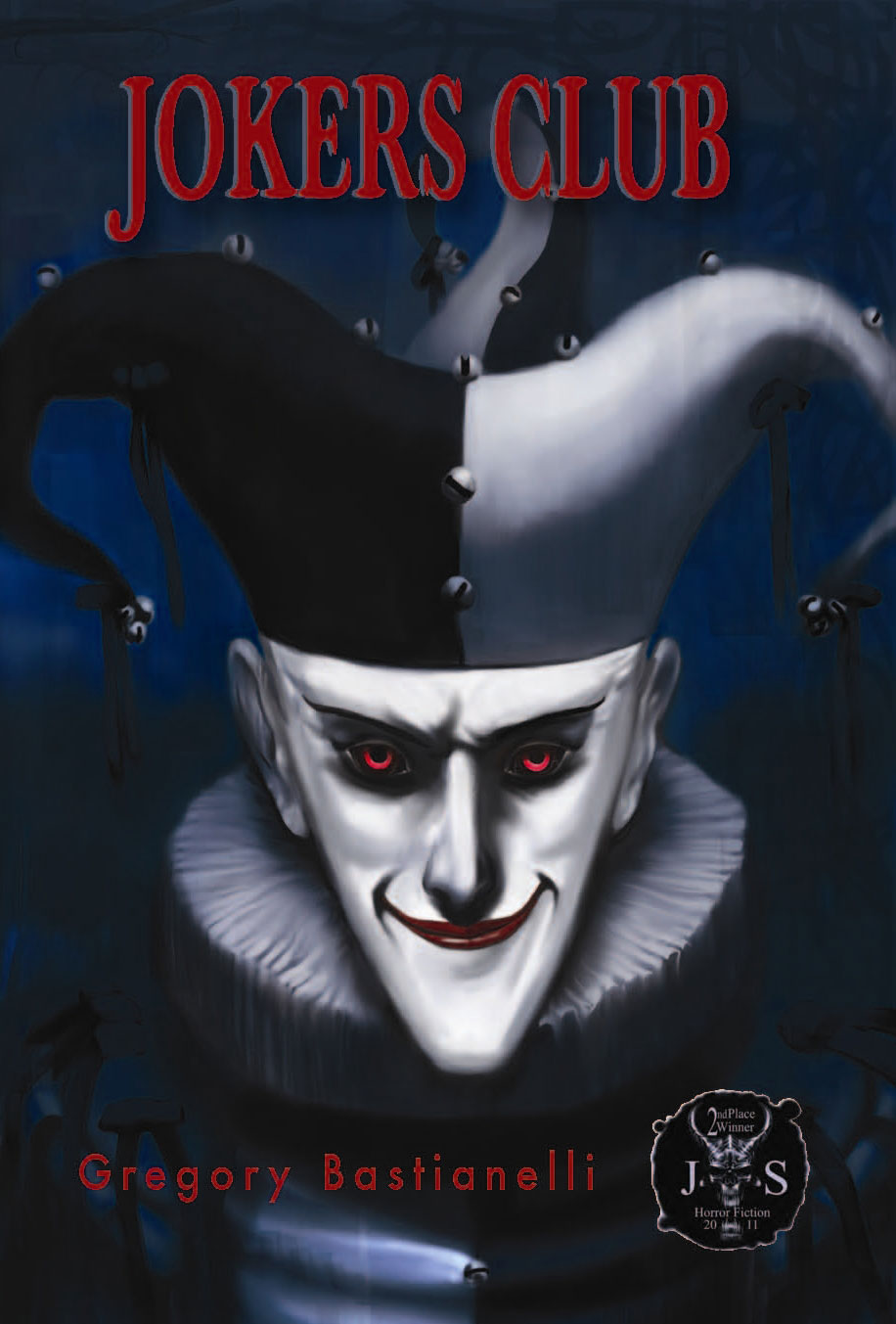 |
|
John Cerullo Minotaur: French Military Justice and the Aernoult-Rousset Affair On Feb. 11, 1912, an estimated 120,000 people in Paris participated in a ceremony at once moving and macabre: a dramatic public procession, with music, much keening, and no little rage, to the columbarium of Père Lachaise cemetery, where the remains of an obscure soldier named Albert Aernoult would be incinerated after a series of angry speeches. Aernoult had died in one of the French Army's Algerian penal camps in the summer of 1909, allegedly at the hands of his officers. His obsequies had been arranged, after years of struggle with the government to recover his body, by a fractious coalition of leftist anti-militarists. They themselves were astonished by the immensity of the turnout. This event occurred at a pivotal point in the "Aernoult-Rousset Affair," a three-year agitation over the practice of French military justice. Aernoult's death came to the attention of the French public through the intervention of a fellow military prisoner, a career criminal named Émile Rousset, who deliberately provoked prosecution in a military court in order to launch his own accusations against camp officers. After two years of legal and political maneuvering, Rousset's charges seemed to be bearing fruit—until he himself was indicted for murder. Military prosecutors, convinced that Rousset was a sexual predator with a genius for gaming the system, built a powerful case against him. But supporters countered with an effective political campaign, using the interlocked Aernoult and Rousset cases to shine a harsh light on the "judicial minotaur" that was, in their eyes, the military jurisdiction. French military justice had indeed been carefully sealed from external political influences for generations. Its defenders argued that this "exceptional jurisdiction" embodied precious moral values, discipline and duty, which the encroachments of "politics" could only corrupt. The antimilitarists who mobilized on behalf of Aernoult and Rousset, for their part, were just as determined to pry it open and render it publicly accountable. This, then, is the issue at the heart of the Aernoult-Rousset Affair, and of Minotaur: the eternal tension between law and politics. See at amazon.com |
 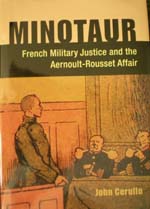 |
|
Mark DeCarteret '93 Flap Flap, my fifth collection of poetry, is mostly culled from publications like Agenda (England), Ars Interpres (Sweden), Conduit, Hotel Amerika, Rhino, Salamander, Tampa Review, and Third Coast where I've been lucky to be included in the last decade or so. My friend Jim Rioux tells it better than I can when he blogs on the lit/music review Flogged Clarity—"These poems take us again and again, in their recognizable strangeness, to our 'rigged' realities, where we inhabit a world occupied not only by the dead, but by our own constant 'rewrites.'" Maybe like these brief letters to a less literal self and all those ex-versifiers looking on in disbelief over my shoulder. But belted out with legitimate feeling, all that's left. Tom Lux seemingly testifying to some of these same "facts" on the book-back when he writes—"DeCarteret's poems are laced with humor, irony, a splendid ear, a big wild heart." See at amazon.com |
 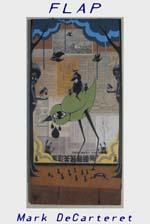 |
Andrew Fersch '07G The Rough Draft of My Life Story Our lives are first drafts, every moment of them. And the joy and pain that trying everything for the first time (no matter how similar it may seem that some situations are) seem best shared through poetry. Andrew Lapham Fersch is a 7th grade Language Arts teacher at Rye Junior High School in Rye, New Hampshire. A graduate of the University of New Hampshire Masters education program, Fersch has taught in the Seacoast area for the past four years. Fersch was a nominee for the 2012 New Hampshire Teacher of the Year, and has been avidly writing children's poetry for the past ten years. His first collection, 'The Rough Draft of My Life Story', a collaboration with illustrator Phillip Ashworth, was published with the intention of donating as many copies as possible to public schools, children's hospitals, and other organizations that work with children. So far, nearly eighteen hundred copies have been donated and that number continues to grow. Fersch is a full time teacher but welcomes anyone and everyone to share their poetry with him. In addition, he promises to respond to anyone who writes. The book is available for purchase at etsy.com and can be downloaded as an eBook on amazon.com (for only a dollar!) |
 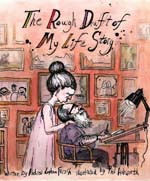 |
|
Kathleen Toomey Jabs '04G Black Wings First there's the story: a layered mystery that highlights the fatal crash of one of the Navy's first female fighter pilots and the efforts of a courageous young woman, who risks everything to discover the truth. Then there's the story behind the story: the challenges facing young women as midshipmen at the U. S. Naval Academy, then as officers in the Navy, the issue of honor and its definition, the collision of justice with an attempt to cover up the facts. The stunning debut novel from Virginia-based writer Kathleen Toomey Jabs, Black Wings envelopes readers in a world of military tradition, replete with secret societies and institutionalized deception as LT Bridget Donovan unofficially investigates the "accidental" death of LT Audrey Richards, who happens to have been her former roommate when both attended the Naval Academy. As a midshipman, the tough, determined Audrey will stop at nothing to get what she wants--the chance to fly combat planes, like her father. Bridget is the roommate she gets saddled with, the smart one whose less than stellar military acumen lands her in hot water with the upperclassmen, relentless in their desire to break down the first-years, in order to build them back up. Despite their differences, the two young women form a strong bond that extends beyond their Academy years until Audrey's secrets tear the friendship apart. The next thing Bridget hears is the shock of her friend's death during take-off from an aircraft carrier. Facts don't add up, and Bridget is compelled to search for answers. Kathleen Toomey Jabs, graduate of the United States Naval Academy ('88), gives us just enough in her taut, riveting chapters, to piece together a picture of envy, revenge, and deceit, before unveiling a chain reaction of surprises at the novel's conclusion. Edward W. Jewell, CDR, USN (ret), calls Black Wings "an exciting novel of intrigue and romance loaded with meticulous, realistic plot details that display the author's wealth of Navy experience and keen powers of observation." Susan Shreve, author of A Student of Living Things, says of the mystery: "a chilling, fast-paced, and intelligent story, wonderfully written." See at amazon.com |
 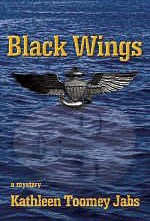 |
|
Anne Marchant '79 A Wild Place and Time A Wild Place and Time is the story of a summer adventure in the Blue Ridge Mountains of Virginia. In the old dairy where Arabeth and Marick Jackson are staying, they find an antique pocket watch that gives them the ability to communicate with another world. There they learn about poaching that is going on nearby, and with the help of several interesting new friends, a friendly ghost, and law enforcement, they set about saving threatened wildlife. While this is a work of fiction for young adults, it is based on real places and real conservation problems. This is a great summer read for any young person interested in wildlife conservation and passionate about the outdoors. See at amazon.com |
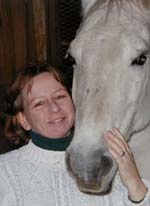  |
|
John Porter '71 Crosscurrents of Change: Concord, NH in the 20th Century After more than 100 years without an update, the Concord Historical Society published the history of Concord, New Hampshire, during the years from 1900-2000. Crosscurrents of Change: Concord, N.H. in the 20th Century was released in May of 2011. The book also makes history, as New Hampshire's venerable tradition of publishing comprehensive municipal histories has fallen into a deep decline. This isn't a dry history book that sits on the shelf, but was published using the latest in graphics publication technology, incorporating a modern writing style and is illustrated throughout with classic and modern photographs. The book was professionally guided by veteran New Hampshire journalist, John Milne, as editor; Concord photo-journalist, Geoffrey Forester, as art director; Concord artist, Rebecca Kinhan, as book designer; and longtime Concord radio personality and executive, Richard Osborne, as project manager. More than 14 authors, knowledgeable in various topics of Concord history, wrote about the Boston & Maine railroad, politics, education, recreation, city government, and other topics. Several UNH graduates were tapped to participate in the project including: Cheryl Bourassa, Ralph Harwood, Allen Lessels, James Milliken, John Porter, Randall Raymond and William Upton. John Porter is from the class of 1971 and has been a UNH employee since 1974 as a State Dairy Specialist for Cooperative Extension. He retired in 2006, but still works part-time in an emeritus capacity. Taking advantage of his agricultural background, Mr. Porter wrote the chapter entitled "Lure of the Land: Concord's farmers evolve to stay close to the soil." The history of agriculture in Concord during the last century very closely paralleled what happened in the rest of the state, and John called upon his previous experiences in researching agricultural history. He was a contributing author and editor of the books Preserving Old Barns and The History and Economics of the New Hampshire Dairy Industry. For the Concord project he spent over a year doing library research and interviewing farmers, growers and other participants in the industry to dig out detailed facts and stories about Concord's dairy industry, livestock, horses, fruits and vegetables and poultry. The agricultural chapter chronicles the dairy industry's evolution from the old butter market to fluid milk and the municipal policies relating to pasteurization and health standards; the decline of the livestock industry; the rise and fall of poultry production; the transformation of the apple industry from wholesale to retail and personal stories of individual farm families. Like all the book's chapters, the agricultural section is well- illustrated and has archive photos of 20th century agriculture and the families that made the industry flourish. The book is a great read and each chapter chronicles the various subjects in detail. It has 405 pages and nearly 2,000 copies have sold to date. Copies of the hard cover/ black and white edition are available for $59.95 plus $7.95 shipping for a total cost of 67.90. A "Keepsake" edition with leather binding and many color photos costs $99.95 plus 7.95 shipping for a total cost of $107.90. Make checks payable to "Concord Historical Society/Crosscurrents" and mail to Concord Historical Society, P.O. Box 1027, Concord, NH 03302-1027. |
  |
|
J. Dennis Robinson ‘73 America's Privateer Lynx and the War of 1812 It’s okay if you are clueless about the War of 1812. I was too until I wrote this book about two schooners named Lynx. One was a sleek Chesapeake privateer captured by the British in the “Forgotten War.” The second is a $3 million reinterpretation that is currently sailing the Atlantic Coast during the bicentennial of that little known era in American history. My job was to weave the two exciting tales together. If you know about Old Ironsides, the Star Spangled Banner and the rock tune “The Battle of New Orleans,” you’re already on your way to understanding Mr. Madison’s War, a war in which we invaded Canada and the British burned Washington, DC. I first saw the modern Lynx in Portsmouth Harbor just after 9/11. She had set sail from Rockport, Maine just days before and was on her maiden voyage to the West Coast. Her owner, Woodson K. Woods, was aboard dressed in 1812-era garb. Although Woods is from Hawaii, he hired famed Annapolis designer Melbourne Smith (US Brig Niagara, Californian, Spirit of Massachusetts, Pride of Baltimore). Lynx was built at Maine and registered at Portsmouth, New Hampshire. I kept in touch with Woods and the nonprofit Lynx Educational Foundation for years until they asked me to write their story. And a great yarn it is, two yarns in one. The project took about 18 months and sent me to Fells Point in Baltimore, to Rockport Marine, and to the “OC” in California. I was aboard Lynx during a battle sail in San Diego Bay when she collided with another tall ship. Besides incredible photographs, the book includes sidebars by Melbourne Smith and other experts on ship design and the War of 1812. AMERICA’S PRIVATEER is my tenth and prettiest history book so far. It is my defense of the neglected American privateers who were not simply “legalized pirates”, but patriots in an era when our nascent nation took on the greatest seafaring power in the world with scarcely a navy of our own. Order signed copies on my website or as “collectible” on Amazon.com |
  |
|
Lisa Stepanski '96G The Home Schooling of Louisa May Alcott: How her Mother and her Father Educated an American Writer One of the best pieces of professional advice I ever received came from my UNH English Department dissertation advisor, Prof. Cinthia Gannett. A doctoral candidate in the comp-rhet program, I was searching for an appropriate dissertation topic when Cindi said, "Just write about the Alcotts. Something will come of it." That's because Cindy knew that since the age of twelve, when I read Little Women for the first time, I was fascinated, obsessed, really, by Louisa, and her parents, Bronson and Abba May. During the early seventies, my formative reading years, there wasn't much written about Alcott, or for that matter, most nineteenth-century American women writers besides Emily Dickinson. Undaunted, I hunted down out-of-print novels and read whatever I could find, to the point that I was an amateur Alcott expert by the time I entered college. While a graduate student at UNH, I even managed to write a few papers about her. Write about what you know, UNH Professor Don Murray—and Cindy—counseled. And so I did. I spent months at Harvard's Houghton Library, the repository for the Alcott papers, becoming an expert interpreter of nineteenth-century handwriting and the family's domestic literacy practices. Writing was at the heart of Alcott family life. A progressive educator, Bronson championed grammar school teaching that made use of what today we call "critical thinking skills" and lots of personal writing—an approach at odds with traditional nineteenth-century pedagogy emphasizing recitation and rote memorization. Abba's lively voice, so evident in her extensive journals which Louisa read as a child, provided her daughter with an early and influential prose model. And of course, Jo March, Louisa's alter ego, is a passionate writer. My book, The Home Schooling of Louisa May Alcott (Mellen 2011), builds on my graduate research and is yet another iteration of my lifelong love, both personal and professional, of all things Alcott. See at amazon.com |
 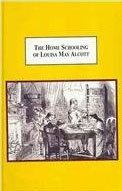 |
|
Paul Tomlingson '53, '64G, '68G I'm Just a Mutt I'm Just a Mutt is a collection of 12 short stories starting with My Friend the Senator and Tux, an endearing mutt wishing only to be loved by his master, a gruff US senator. The stories continue with Hills into Hollers, the story of retired seniors Ty and Alice as they try to survive the devastation of West Virginia mountaintop removal mining. Then in Let's Talk, a British actor successfully outwits the US president in a most unusual way. Up North tells the story of an Alberta farm wife with an unusual talent who rescues a struggling wood products plant from closing. Dream on Chester recalls the escapades of Chester the whimsical janitor at the toilet paper factory who hallucinates about his narrow escape from a female nudist colony. The Little Red Schoolhouse tells of the startling accomplishments of a young Nigerian boy who keeps his promise to bolster education in his small, poor community. Fire for Effect follows the wild fun of a West Point ski team as they skirt trouble in Washington Hall, the massive cadet dining hall. And, Park it Baby relates how a young, attractive lady truck driver works behind the scenes to save the career of a manager at a massive Western mining operation. Rolling Along explains how a decorated career soldier is pulled back from the devastating ravages of alcohol only to sacrifice himself to duty as he sees it. Mrs. Cordova's Christmas Extravaganza shares the disappointment and joy as young Durham, NH girl awaits delivery of a new tutu as a huge winter storm delays its delivery and threatens the annual Christmas dance extravaganza. Punctuation Revisited pokes fun at a new punctuation trend in the English language that pervades the speech of a whole generation. Whoa there Buck describes how a clever bronc-rider and his horse, Buck, manage to successfully dispatch Occupy Denver protesters. The book is available at Amazon Kindle. Paul Tomlingson is West Point graduate holding two master's degrees from UNH and is the author of 11 textbooks and over 100 published trade journal articles on industrial maintenance management. See at amazon.com |
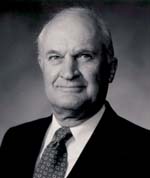  |
blog comments powered by Disqus


